Timeline: 150 Years of Yellowstone
150 Anniversary
While 2022 marked the 150th anniversary of Yellowstone National Park, human history in Yellowstone dates back more than 10,000 years. Here’s an at-a-glance look at the history of Yellowstone, with some key dates and happenings highlighted along the way.
Paleoindian & Archaic Period: A Clovis point from at least 11,000 years ago, a Folsom projectile point from 10,000 years ago, and other Paleoindian artifacts have been found across the land currently preserved by Yellowstone National Park. Many artifacts have been found around Yellowstone Lake, and a site on the shore has been dated to 9,350 years ago! The area around the lake continued to be used as a camp into the Archaic period (1,500-8,000 years ago).
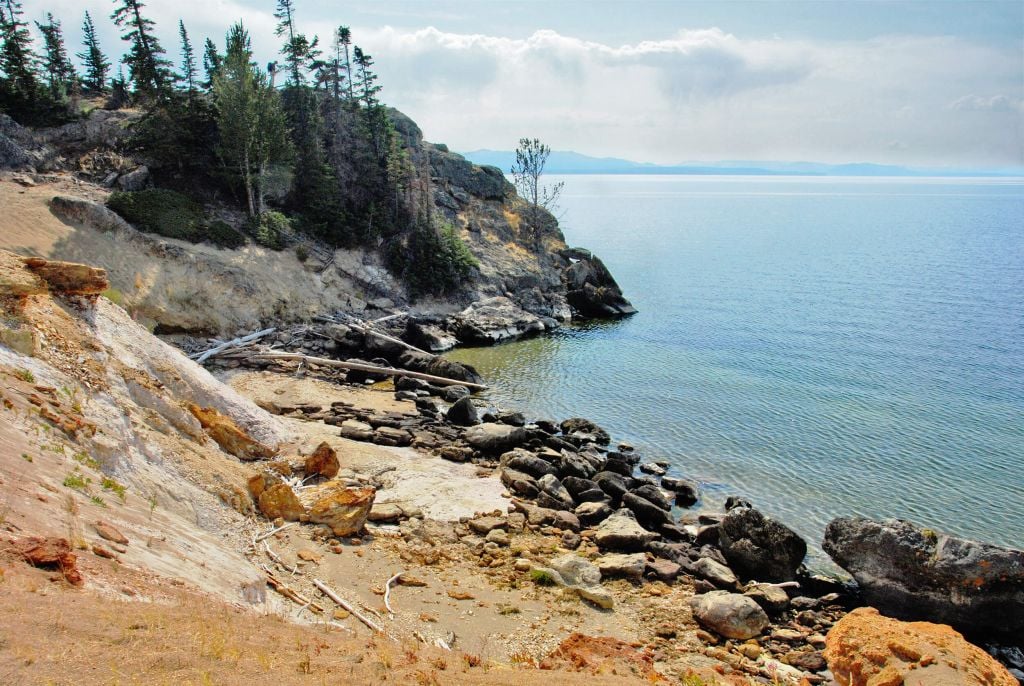
500–1800s CE: As the Little Ice Age began, the Kiowa, Crow, and Lakota Sioux people are believed to have come into the area. In the late 1700s, fur traders entered the region via rivers. The Lewis and Clark Expedition never traveled in the area currently within park boundaries but John Colter, one of the expedition members, is thought to have explored the area after the expedition ended. When the Little Ice Age ended in the 1850s, expeditions (including the Folsom–Cook–Peterson expedition, the Washburn–Langford–Doane expedition, and the Hayden expedition) began to map the park and share its wonders with the world.
March 1, 1872: President Ulysses S. Grant signs the Yellowstone National Park Protection Act, officially designating Yellowstone the world’s first national park.
Late 1870s: The U.S. Congress approves measures to “protect, preserve, and improve the Park.” Superintendent Philetus W. Norris oversees the construction of roads and of a park headquarters at Mammoth Hot Springs. Today’s Grand Loop Road follows much of Norris’ original road system.
1886: Due to issues with poaching, vandalism, and other crimes, the U.S. Army takes over the supervision of Yellowstone, guarding major attractions and enforcing regulations throughout the park as well as patrolling the interior.
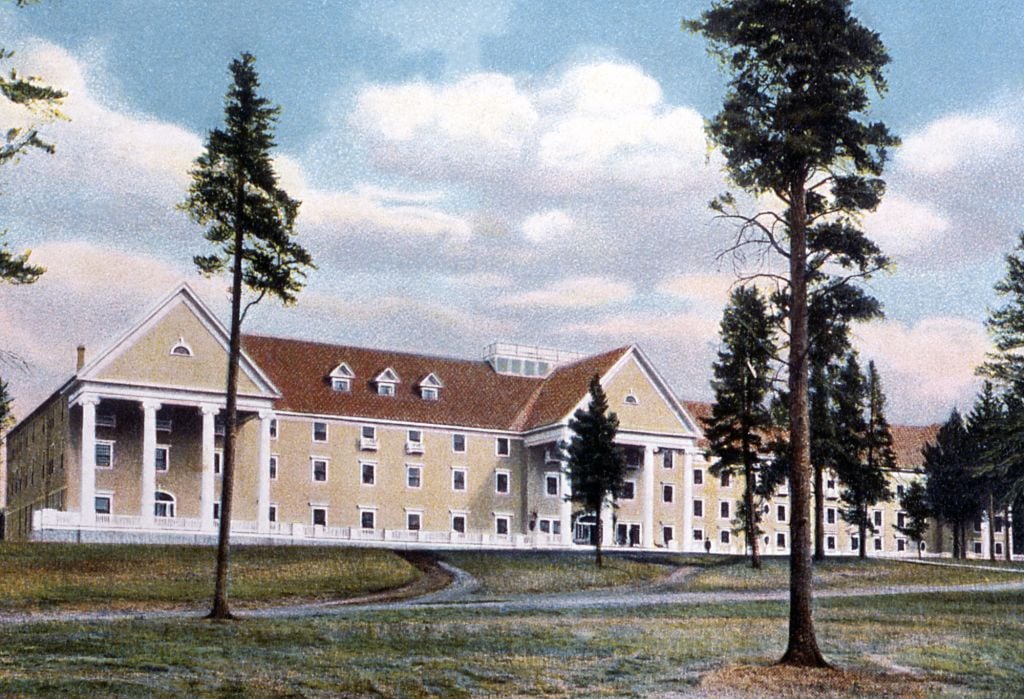
Postcard of the Lake Hotel;
Frank J Haynes;
No date
1891: Lake Hotel is built. The iconic columns and extended gables were added in 1903-04, and the hotel is further renovated in the 1920’s to add a port cochere, Sun Room, East Wing of guest rooms, and other interior features. In 2013-14, a major structural and interior renovation is completed and Lake Hotel received National Historic Landmark designation in 2015.
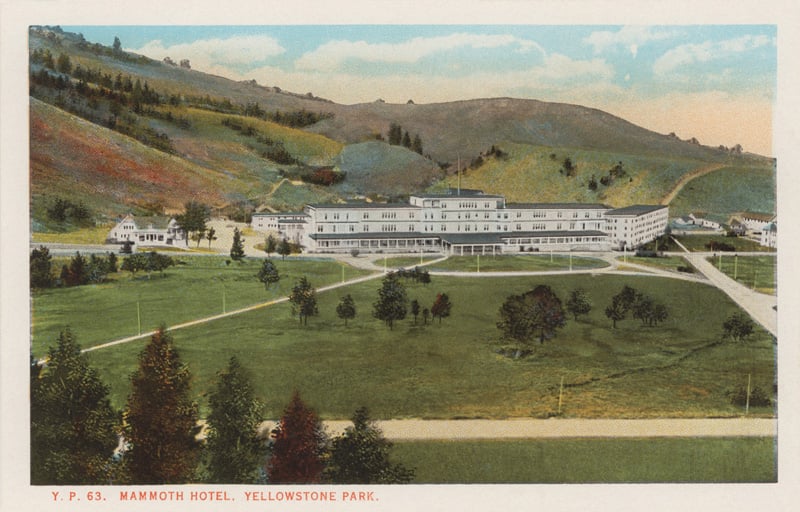
Late 1800s: Development of the Mammoth Hot Springs commences, including the Mammoth Post Office and, in 1903, the Roosevelt Arch, located approximately five miles north of Mammoth in Gardiner, MT.
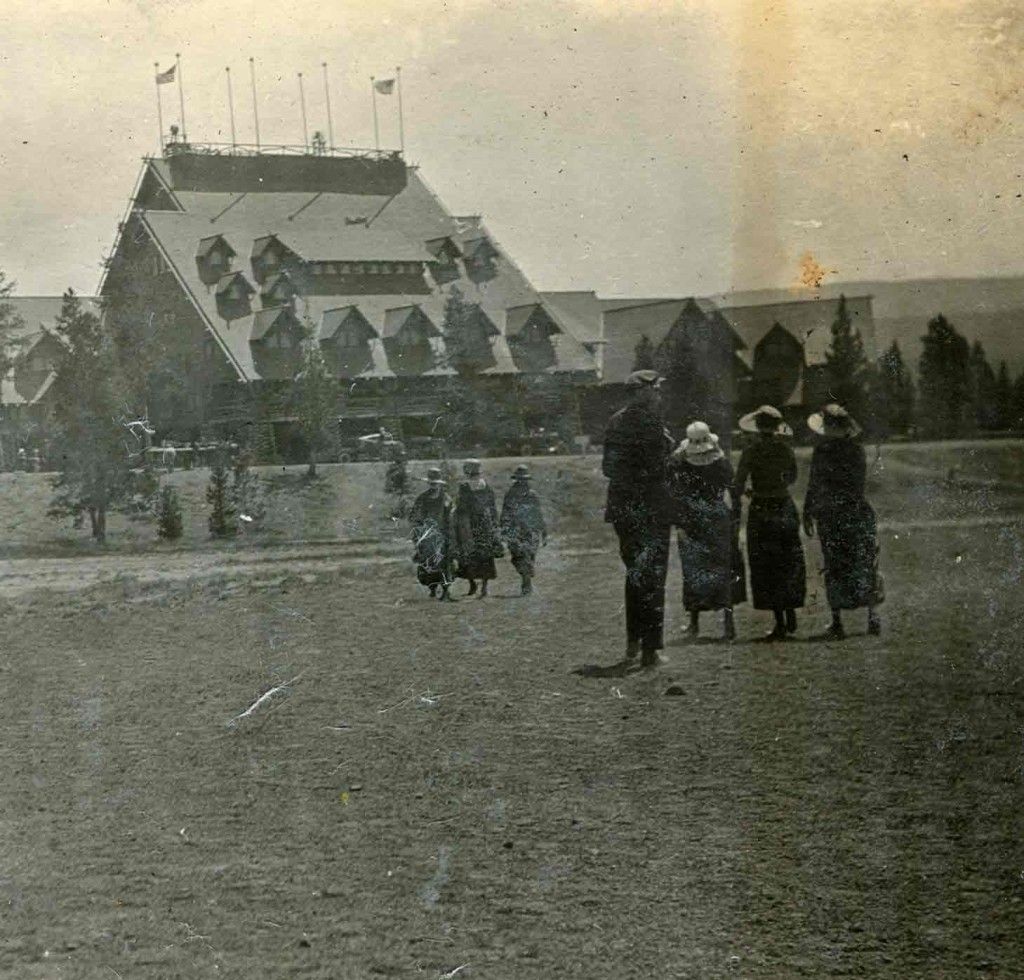 1904: The Old Faithful Inn is completed, which was designed to complement the natural setting around the lodge and became a significant inspiration for rustic architecture. In 1987, it is designated a National Historic Landmark.
1904: The Old Faithful Inn is completed, which was designed to complement the natural setting around the lodge and became a significant inspiration for rustic architecture. In 1987, it is designated a National Historic Landmark.
1916: The National Park Service Organic Act is passed by Congress and approved by President Woodrow Wilson. Yellowstone’s first park rangers are appointed in 1918 and become responsible for the management of the park.
1920: The Roosevelt Lodge is constructed. It replaced a tent camp where what was originally known as Camp Roosevelt. The accommodations today remain rustic, with most cabins heated by wood stove, but is also one of the most popular lodges in the park.
1929: The park’s boundaries are adjusted to include a region of petrified trees in the northwest corner and the watershed of Pebble Creek in the northeast corner. The eastern boundary now includes the headwaters of the Lamar River and part of the Yellowstone River’s watershed. In 1932, an additional 7,000 acres between the north boundary and the Yellowstone River are added, to provide a protected winter range for wildlife such as elk and deer.
1940s: During World War II, park activity declines sharply as employees, visitors, and money for national parks are all redirected to the war efforts. Once the war ended, visitation jumped again, reaching one million visitors in 1948.
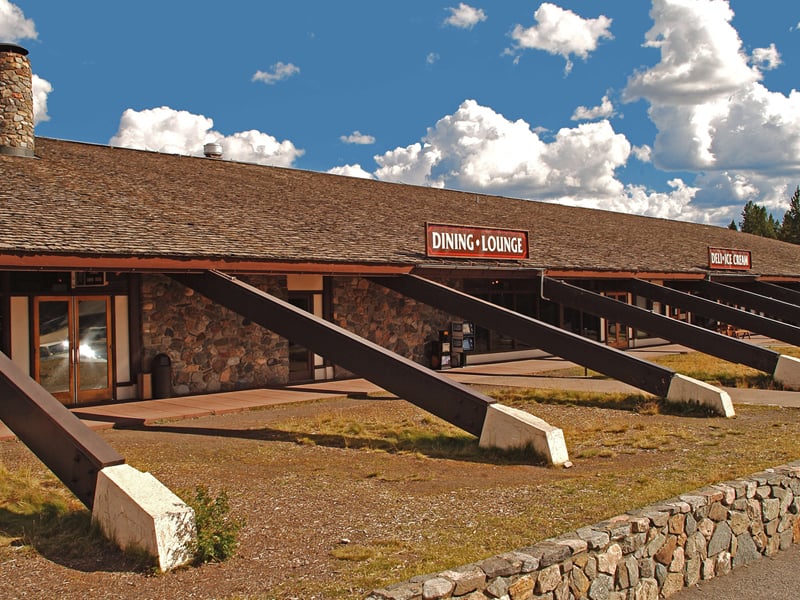
1955: The years of neglect during the war are apparent – visitors complain about poor facilities and infrastructure. National Park Service Director Conrad Wirth develops a plan for an improvement program called Mission 66 to enhance the park in time for the National Park Service’s 50th anniversary in 1966. New buildings are constructed and Yellowstone, along with many other national parks, is revitalized. Mission 66’s first project in Yellowstone, Canyon Village, opened in July 1957.
1970s: A number of acts are introduced and passed by Congress to help protect the environment. These include the National Environmental Policy Act and the Clean Air Act (1970), the Clean Water Act (1972), and the Endangered Species Act (1973).
1988: More than 50 wildfires ultimately burn into five massive fire complexes that impact 793,880 acres in Yellowstone National Park – a full 36 percent of the park’s area. The largest, the North Fork Fire, burned more than 410,000 acres. The cause of the North Fork Fire was a discarded cigarette.
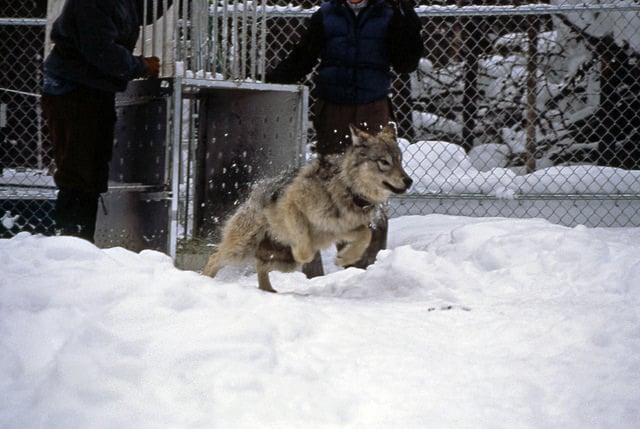
1995 and 1996: Wolves are reintroduced to Yellowstone National Park. During the late 1800s and early 1900s, wolves were identified as predatory animals and were routinely killed, and in 1923 the last pack of wolves had been eliminated from the park. The restoration begins with 31 gray wolves from western Canada in 1995 and 1996. An additional 10 wolves are brought in from northwest Montana in 1997. The wolf population continues to be carefully monitored, and in 2012, wolves were delisted from the endangered species list.
The New Millennium: At the turn of the new millennium, federal, state, and tribal partners adopted the Interagency Bison Management Plan while grizzly bears and wolves were removed from the federal threatened species list. In 2016 the National Park Service celebrated its 100th anniversary, and Yellowstone welcomed a record 4.2 million visitors.
Yellowstone has witnessed a multitude of changes over its 150-year span while many things have remained the same. Throughout time (or over history), people’s love of this special place has remained a constant, and Yellowstone is sure to attract people for 150 more.
For more travel experiences to Beautiful Places on Earth™ available from Xanterra Travel Collection® and its affiliated properties, visit xanterra.com/explore.
Want to experience Yellowstone in-depth? See what makes Yellowstone National Park a great place to work for a season or longer!
Read More History
- Read More History